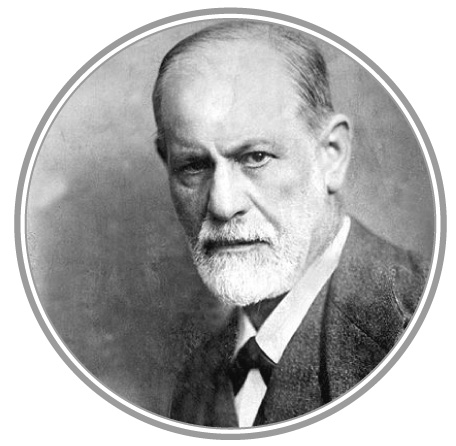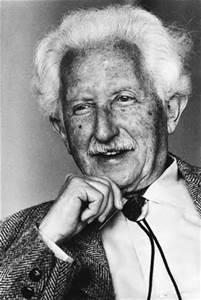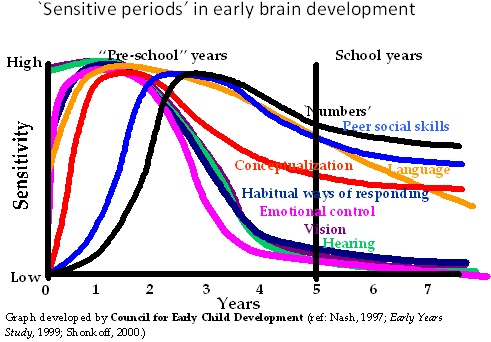Lesson 6: Overview of Child Development, Brain Development, and Developmentally Appropriate Practice

Experts tell us that 90% of all brain development occurs by the age of five. If we don’t begin thinking about educating in the early years, our children are at the risk of falling behind by the time they start kindergarten. ~ Bob Ehrlich
Learning Outcomes
Upon completion of this lesson's material, students will be able to:
- Define ways that brain development is impacted
- Explain how to support brain development
- Define Key Messages of NAEYC’s position statement on Developmentally Appropriate Practice
- Discuss the nature vs. nurture developmental debate
- Discuss how early childhood developmental theorists are still relative in best practice
Teaching
This lesson is going to provide a broad overview of child development, brain development, and developmentally appropriate practice. Throughout the lesson, links to additional resources are provided.
Mary Mary, quite contrary, how do the children grow?
Child Development is the various stages of physical, social, cognitive, and emotional growth that occur from birth through young adulthood. For the purpose of this course, we are going to focus on birth through age 8.
Developmental Domains – development is broken down into domains, or areas, as a method of organizing developmental patterns.
Physical Development– changes in the shape, size, and characteristics of the body – changes in physical abilities –
Cognitive Development – changes in thinking, memory, problem solving, and other intellectual skills – changes in brain/mental processes
Social Development – changes in relationships with others
Emotional Development – changes in dealing with emotions and regulating emotions
Periods of Development – the different periods of development focus on changes that occur during that time frame in the developmental domains
Communication Development – changes in the ability to send and receive messages through sounds, words, body language, and gestures (verbal and non-verbal) Child development follows a sequence but children grow and develop at different rates. This means that certain aspects of development follow each other but the timing of those occurrences may differ. An example is walking. Some children walk by the age of one others may walk a few months sooner and others a few months later. They may reach the milestone at different times but they typically walk after crawling (BTW – crawling is an important developmental milestone. It enhances brain development because of using cross modal functions – opposite hand to opposite leg. Crawling also helps to strengthen leg and hip muscles and bone structure).
Cephalocaudal Development –Development occurs from head to toe – sensory and motor development
Proximodistal Development – Development of center of the body and moves toward extremities – Example control of trunk and arms occurs before hands and fingers
Nature vs. Nurture debate – A long standing debate on whether development is based more on nature (biological) or nurture (environmental). Is development based more on what a child is born with the ability to learn (nature) or the environments and experiences they are exposed to (nurture)? The early childhood development theorists that we discussed in lesson 2 tried to define how children develop by nature, nurture or a mixture of both.
There are many other theories on development, but these are the most influential in the field of early childhood development.

reud – (1856-1939) Freud was a neurologist originally and most of his work is based on the study of adults. Many people think of Freud as the guy with the couch in his office and people describing their dreams. Freud considered children passive in their development and concluded behavior is dictated by both conscious and unconscious processes. He believed nature influenced development but nurture played a role as well
Id – the id is based on instinct and is dictated by the unconscious – the focus of the id is on pleasure
Ego – the ego is based on reality and is dictated by the conscious and unconscious. The ego develops from the id with the goal to satisfy the demands of the id in a socially acceptable manner. (I think of the ego as the decision maker; the angel on one shoulder and the devil on the other).
Superego – the superego is based on morality and develops during early childhood (that is why children in this age group are so focused on the rules). The superego focuses on morals and inspires us to act in socially responsible and acceptable ways; when an individual does not behave acceptably they feel guilt.
Freud believed children are born with sexual urges that account for their behavior and development. He based his theory on psychosexual stages.
- Oral stage (birth to 18 months) focus on the mouth
- Anal stage (18 months to 3-4 years) focus on anus (potty training)
- Phallic stage (3-4 years to 5-7 years) focus on genitals
- Latent Stage (5-7 years to puberty) libido not involved, typically learning and same sex friends
If the needs during a particular stage were not met, Freud theorized fixation would occur and the individual would manifest that unmet need later in life. For example, someone who did not have their oral needs met because they were fed on a strict schedule might smoke or bite their nails later in life. Another example is an individual who was very strictly potty trained (anal stage) might be either obsessed with neatness or extremely messy.
Information retrieved from http://www.simplypsychology.org/Sigmund-Freud.html

Erikson – (1902-1994) Erikson was influenced by Freud but felt culture and society played a role in development. Erikson believed development occurred across the entire life span (total of 8 stages). He theorized the conflicts of inner instincts and cultural /social demands led to a crisis or dilemma. A positive resolution led to healthy personalities. Unresolved areas hindered the ability to complete future stages, but the conflict could be successfully resolved at a later time. In Erikson’s early stages the focus is on the importance of emotional, quality relationships. Erikson believed nurture prevails but gave some credit to nature.
Erikson’s psychosocial stages of development during the early childhood period are:
- Trust vs. Mistrust – Infancy to 1 year – the individual is dependent on the caregivers to meet their needs of food, warmth, love, safety, and nurturing. If their needs are met they develop trust and feel safe. If their needs are not met, or met inconsistently, the child may be mistrusting and insecure.
- Autonomy vs. Shame and Doubt – early childhood – the child learns a sense of personal control and gains independence. If they are allowed to make simple choices and decisions they are confident. If they are not allowed to gain some independence they may feel inadequate and are doubtful of themselves. Toilet training would be an example of them gaining control of bodily functions.
- Initiative vs. Guilt – preschool years – children begin to assert power and control during social interactions. If they are successful they feel capable and will try new things. If they are unsuccessful, they may have self-doubt and lack initiative. Erikson’s theory continues with five additional stages covering the remainder of the life span.
Information retrieved from http://www.simplypsychology.org/Erik-Erikson.html
Piaget – (1896-1980) – Piaget focused on how children learn in developing the Cognitive Theory. He theorized the child is active in development and believed nature and nurture are both important to development. Piaget’s focus of study was on children learning differently than adults and he believed they are born with certain mental processes that develop over time.
- Schemas – ways to organize knowledge. As schemas become more advanced, higher order thinking occurs.
- Assimilation – when a child is exposed to new experiences they use existing schemas to understand
- Accommodation – when a child is exposed to new experiences, they must change their existing schema to understand
Piaget’s stages of development:
- SensoriMotor – 6 months to 2 years – the most important concept of this stage is object permanence (knowing an object still exists even if they cannot see it). Example – A caregiver is playing with a young child. They are showing the child a stuffed animal. They put the stuffed animal under a blanket. The child with an understanding of object permanence will look under the blanket for the stuffed animal. This concept can be supported by interactions like peek-a-boo.
- Pre-operational – 2-7 years – children begin to understand symbolic thinking and understand that certain things can represent something else. They begin to understand print. One of the first symbols many children in today’s society would understand is the golden M represents french fries. Egocentrism (the ability to only see their point of view) is prevalent in the early part of this stage and begins to diminish later in the stage.
- Concrete Operational – 7-11 years – children begin to understand logic. They are able to work through a problem mentally.
- Formal Operations (11+ years) – the ability to think abstractly.
Information retrieved from http://www.simplypsychology.org/piaget.html
Vygotsky - (1896-1937) – Vygotsky believed that culture, social interactions, and biological influences are all important to development. Children are active participants in their development. Vygotsky developed the Social Learning Theory in which children learn from social interactions that involve culture. He believed that development varied from culture to culture. Vygotsky emphasized the role of environment and language in development. The following terms were essential parts of his theory:
- Private Speech - when a child would solve a problem or work through a situation by talking to themselves about the situation and possible outcomes
- Zone of Proximal Development – when a child is involved in an activity that they are able to accomplish with assistance but unable to accomplish on their own
- Scaffolding – development and learning occur with support, guidance and interaction
Information retrieved from http://www.simplypsychology.org/vygotsky.html
Skinner – (1904-1990) – Skinner developed the theory of Operant Conditioning. Basically, this means reinforcing a behavior for a desired response. Much of the focus is on reinforcement and punishment. Positive reinforcement strengthens a behavior by production of a positive consequence. Negative reinforcement promotes a behavior by removing a negative consequence. Punishment reduces a behavior. Behavior modification involves changing the environment to change an individuals’ behavior.
Information retrieved from http://www.simplypsychology.org/operant-conditioning.html
Brain Development
In the first three years of life, the brain grows more than it will at any other time. It does continue to grow throughout the lifespan, but a child’s brain is two and a half times more active than an adult brain. Millions of neurons are making connections. Pathways (synapses) are created by experiences. Utilizing these pathways strengthens them, while lack of use causes them to deteriorate (pruning). Stress and emotional threats can increase pruning. Positive experiences increase capacity for memory, understanding, and higher order thinking skills. Proper nutrition also plays a role in brain development. Physical touch, opportunities for play, sensory experiences (sounds, music, visual), communication, and consistent caregiving all impact early brain development.
New research continues to show how critical brain development is in the first five years and has been a major topic driving the message of early childhood’s importance. We are literally shaping the brains of the future and have the most important job out there. In the following video and web resources you will find more information you will need to complete your assignment.
- How Brains are Build: The Core Story of Brain Development (4:05) https://www.youtube.com/watch?v=LmVWOe1ky8s
- Links to age based articles on supporting brain development https://www.zerotothree.org/resources/series/what-you-can-do-to-support-brain-development
- Link to website Harvard University Center on the Developing Child – Brain Architecture – include links to many other resources http://developingchild.harvard.edu/science/key-concepts/brain-architecture/

Developmentally Appropriate Practice (DAP) – NAEYC
Developmentally Appropriate Practice(DAP) – NAEYC guideline of standards for high quality care and education based on child development and the uniqueness of each child (observed interests, abilities, and needs) with consideration of social and cultural background. These guidelines are written to assure that early childhood educators are optimizing brain development and using best practice when caring for our future.
The core considerations for DAP are:
- The educators knowledge about child development and learning
- The educators knowledge about each child as an individual
- The educators knowledge about the social and cultural contexts in which the child lives
Assessment
Lesson 6 Quiz
- From the How Brains are Built video:
- What are the two kinds of stress that impact child brain development? (5 points)
- Name the three effects of toxic stress that impacts brain development in young children. (5 points)
- From the Video in the website Harvard University Center on the Developing Child, what is it that shapes the process that determines whether a child’s brain will a strong or weak foundation for all future learning, behavior and health? (10 points)
- In the ZERO to THREE web resource you will find handouts on how to support brain development. Choose a handout and answer the following:
- What age did you chose and why? (5 points)
- How many and what topic areas are listed? (5 points)
- List one specific strategy and which area that you didn’t know supported brain development. (10 points)
From the DAP Text pgs xii-xiii
- What is the achievement gap? (10 points)
- What does a comprehensive, effective Curriculum consist of? (10 points)
- What is Developmentally Appropriate Practice? (10 points)
- What is best practice? (10 points)
- What is the most powerful determinant of learning outcomes and development? (10 points)
- What important time in a child’s life promotes key abilities that enable children to learn successfully? (10 points) Hint – this is often viewed as unimportant to child development
Lesson 6 Discussion A
Which do you think play a greater role in development, nature or nurture? Explain your reasoning. Support your answer with facts and examples.
Lesson 6 Discussion B
Think back to your experiences with young children and some of the milestones they have met. Which developmental theorist do you believe best describes early childhood development and why?